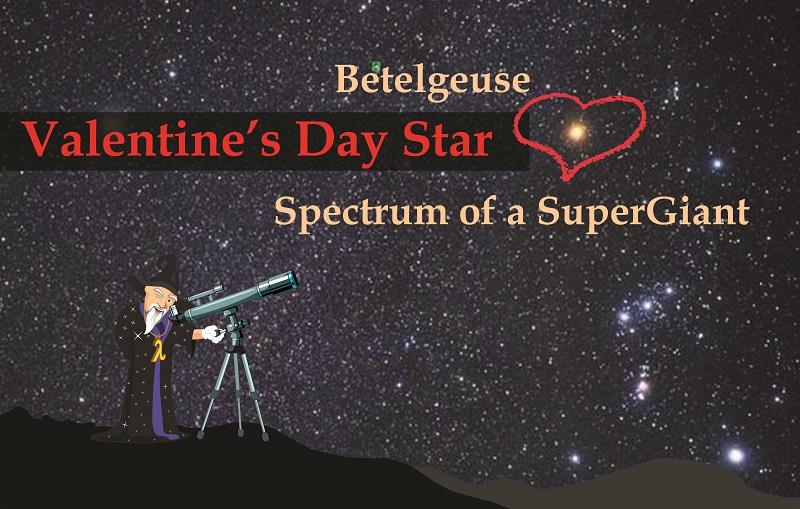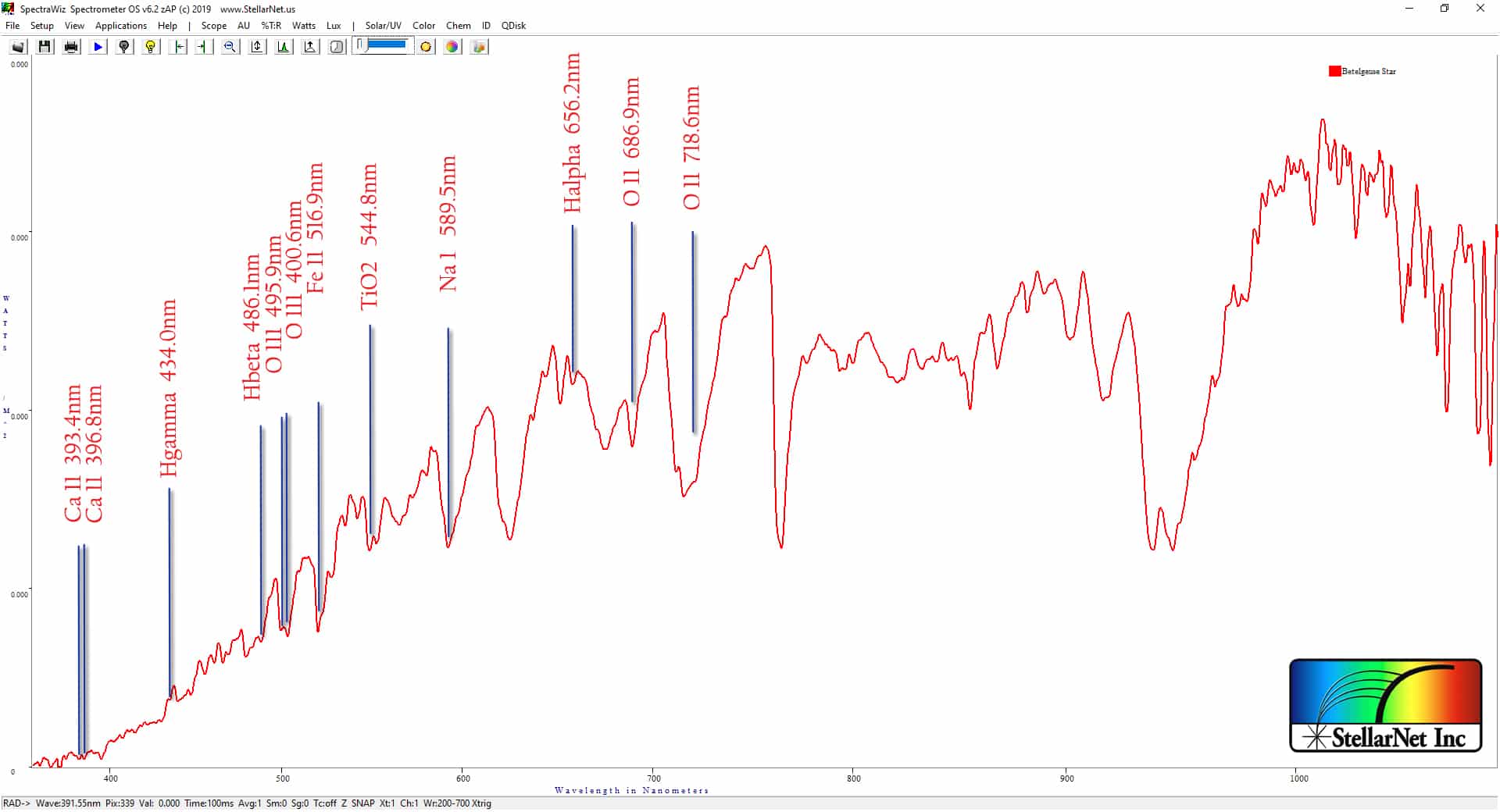
The SpectraWizard begins his quest to explore the Universe and “Develop Intelligence from Light” by taking a look at Betelgeuse, the Valentine’s Day star. The SpectraWizard is a bit of a romantic and realizes stargazing can also be an activity for two.
Betelgeuse is a huge, bright red, pulsating star and is at its highest point above the horizon every Valentine’s Day night between the hours of 8 and 9 p.m (@StellarNet Headquarters, Tampa, FL). It is located in the constellation Orion and located at the warrior’s armpit. Betelgeuse is an extremely large red supergiant and is about as wide as Jupiter’s orbit around the sun. It’s also a variable star, which means that its atmosphere is expanding and contracting, causing its light to pulse on a semi-regular basis, on average about once every six years. Stargazing at this huge, red beating heart in the sky is a great way to spend your Valentine’s Day.
The SpectraWizard wants to find out more about why Betelgeuse is pulsing and why it is so bright red. He quickly grabs a BLUE-Wave-VIS spectrometer and hooks it up to his telescope. The SpectraWizard’s spectrometer is WiFi enabled so he can easily control the spectrometer with his iPhone. This reduces the amount of clutter on his astronomical viewing porch and allows him to control the spectrometer without bumping or touching the telescope. Aligning and tracking Betelgeuse most accurately will allow its light to enter the telescope optics centered and illuminate the spectrometer’s entrance slit most efficiently.
The Spectrum of Betelgeuse reveals much about its composition and temperature. From the spectrum, we can see strong lines of neutral metals and molecular bands of titanium oxide dominate. Betelgeuse’s Color Temperature can be calculated using the StellarRAD App to be ~3350K which classifies it as an M supergiant. From hottest to coldest, these seven spectral classes are designated O, B, A, F, G, K, and M.
Betelgeuse is the 10th brightest star in the night’s sky 🙂
The SpectraWizard didn’t stop there. He wanted to analyze the data further and decided to e-mail himself all the spectral data to review using his desktop SpectraWiz Software. Below you can see the Betelgeuse Spectra with estimated elemental and molecular peaks labeled.







